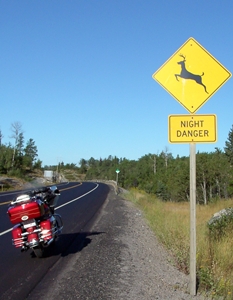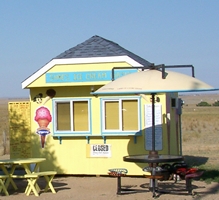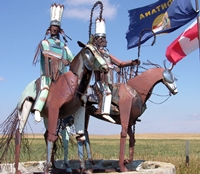 Yesterday I rode south to the Blackfeet Nation, where warriors on horseback guard the northern entrance to the rez. Artist Jay Laber created the sculptures out of rusted car parts remaining from the disastrous 1964 flood that devastated some areas of the reservation downriver from the Two Medicine River dam. Three more of Jay’s sculptures guard the south, west and east entrances to the reservation.
Yesterday I rode south to the Blackfeet Nation, where warriors on horseback guard the northern entrance to the rez. Artist Jay Laber created the sculptures out of rusted car parts remaining from the disastrous 1964 flood that devastated some areas of the reservation downriver from the Two Medicine River dam. Three more of Jay’s sculptures guard the south, west and east entrances to the reservation.
To qualify as a Blackfeet tribal member, one-fourth blood is required. Approximately 8,000 tribal members reside on the rez, which encompasses 1,462,640 acres.
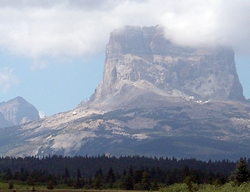
After a stop at Many Glacier, I backtracked and caught Montana 17 north to the border and returned to Canada. This is a gorgeous ride, but 17 is populated by lots of open range cattle lounging on the roadway. They’re all black, and difficult to see in the shaded areas of the highway. I can’t imagine riding it at night for just that reason.
I’ve become so accustomed to crossing into “the States” that for me it’s just a matter of heading south and hitting the line. Polite Customs agents, few questions and a minimum of formality are the rule, and I’ve never ever had a problem being admitted. This time, however, I had forgotten my citizenship documents.
No problem, though.
After scanning my driver’s licence and receiving a lecture about not having citizenship papers, I was allowed into the country one more time by the tourist-friendly border guard.
Here’s a tip for those of you who are new at the border-crossing game: If you’re wearing dark glasses, take ’em off. The agents want to see your shifty little eyes.
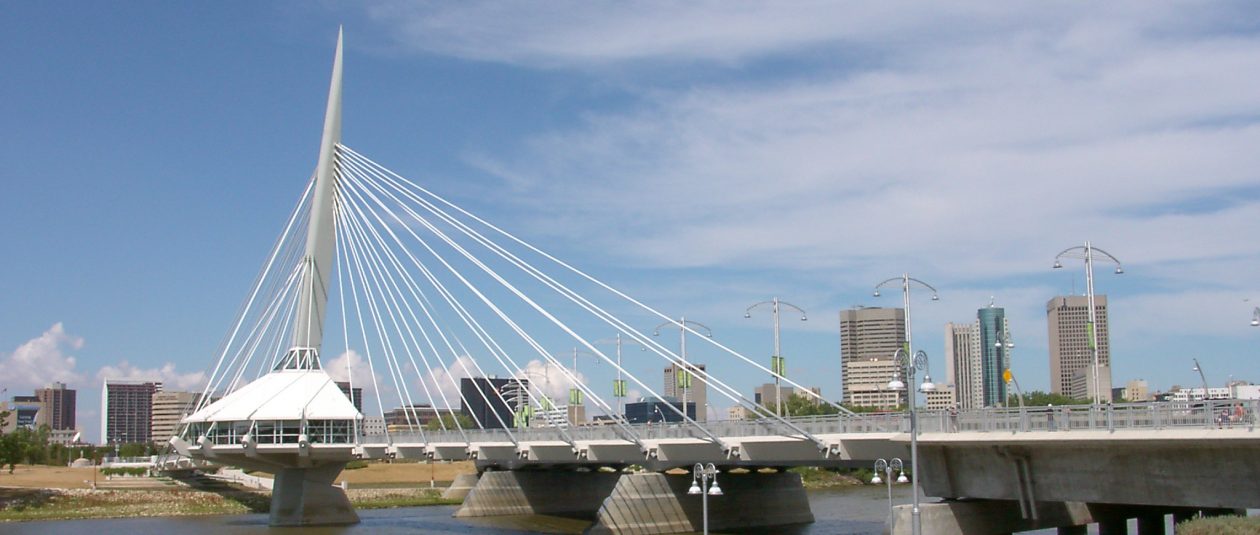
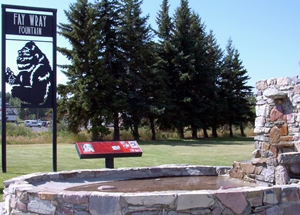 The Fay Wray Fountain in Cardston, Alberta was built after a visit by Fay in 1962. Fay provided the money after being sent a check by festival organizers to cover her costs for attending. She mailed the check back, and the town built the fountain with the proceeds.
The Fay Wray Fountain in Cardston, Alberta was built after a visit by Fay in 1962. Fay provided the money after being sent a check by festival organizers to cover her costs for attending. She mailed the check back, and the town built the fountain with the proceeds.



